Are you curious about the fierce weapons knights used to battle their foes in medieval times? The flail, a weapon with swinging spikes, played a unique role in history’s wars. Our journey into this intriguing weapon will unveil its development, uses in combat, and how it’s been transformed over centuries. Read on and uncover the secrets of the medieval flail!
Table of Contents
Historical Origins and Design of the Flail
The flail began its history as a simple agricultural tool, but it evolved into an intimidating medieval weapon renowned for its unique design. Its transformation and adaptation for combat reveal fascinating insights into the ingenuity of warfare during the Middle Ages.
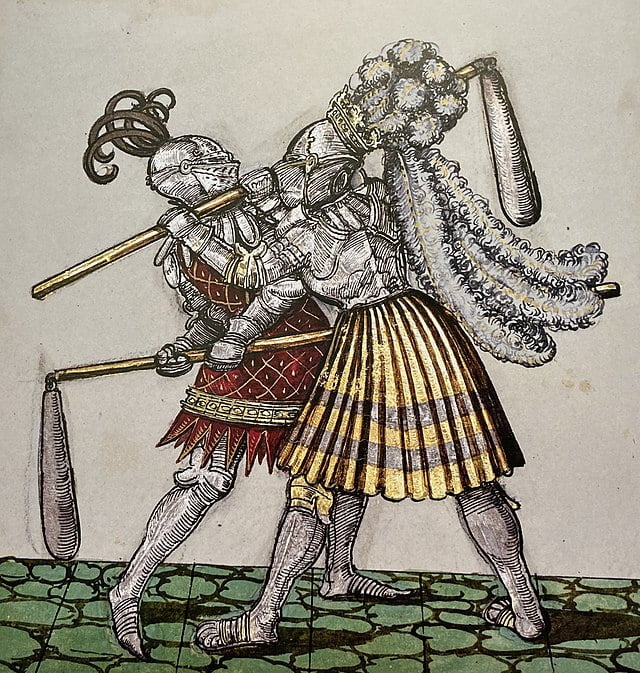
One-Handed Military Flail
Known in medieval Eastern Europe and Russia, the one-handed military flail earned a fierce reputation on the battlefield. Warriors brandished this weapon with a single hand, wielding it to strike down their opponents with lethal force.
It had a robust wooden handle that connected to a spiked metal weight by safety chains or ropes. This ensured that the flail wouldn’t easily slip from the warrior’s grip during combat.
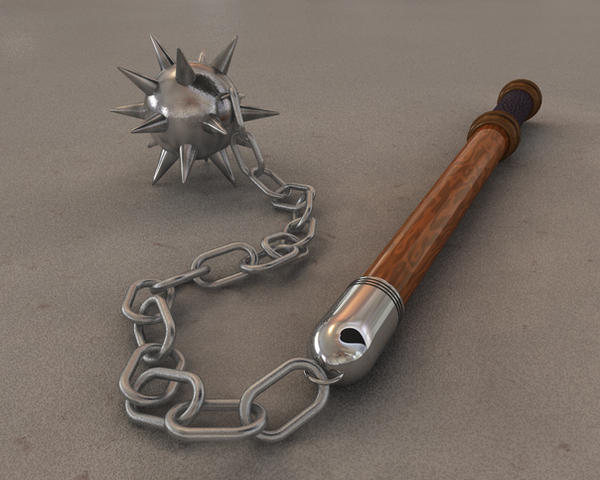
In close quarters, soldiers unleashed the destructive power of morning stars and maces, both variations of this type of flail are designed for maximum impact damage. Swinging a flail at high speeds required skillful maneuvering as well as constant motion. A soldier extends his arms wide to maintain momentum. This stance also makes it exceedingly difficult for enemies to defend against or predict where the next blow would land.
Defenders faced an intense challenge in dodging or deflecting attacks from this relentless weapon; full concentration was essential to survive its onslaught.
The Two-Handed Great Flail
The two-handed great flail started its journey as a simple tool for threshing corn, with long wooden handles and a short, free-swinging stick attached by a chain. As it evolved into a weapon of war, the harmless wood gave way to deadly metal.
This type of flail was not just another piece of medieval weaponry but represented ingenuity on the battlefield. Its ability to strike over or around shields made it particularly useful against armored opponents. Skilled warriors would swing this fearsome weapon with both hands, keeping it in motion to maintain momentum and maximize impact.
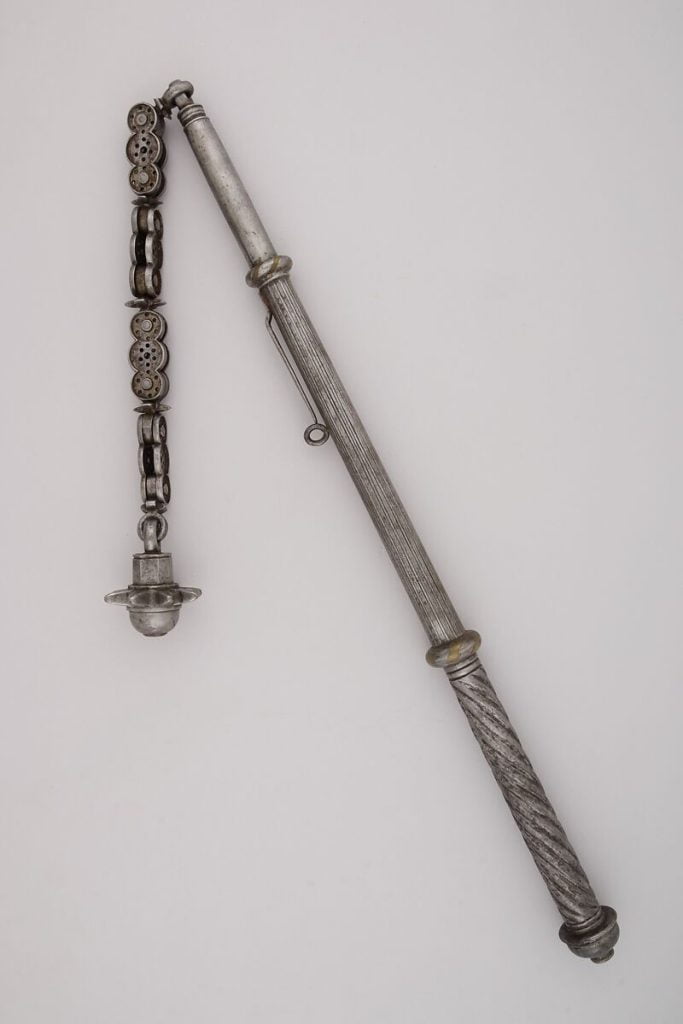
Moreover, its lightweight design allowed foot soldiers to carry and wield it without sacrificing speed or stamina during extended combat. The intimidating sight of the spiked flail head whirling through the air at high speeds could unnerve even the most seasoned fighters facing these men-at-arms.
Notable Battles
As the flail evolved, so too did its prominence on the battlefield. Warriors wielding this intimidating weapon left an indelible mark on medieval warfare. Let’s look at some notable battles where flails played a crucial role.
- Hussite Wars: In the 15th century, Czech innovator Jan Žižka harnessed the power of flails atop his revolutionary war wagons. His troops, armed with various weapons including spiked flails, cut swathes through enemy ranks and used these mobile fortresses to devastating effect.
- Hundred Years War: Flail bearers played a pivotal role during this extensive conflict between England and France. Throughout battles, soldiers equipped with military flails charged into skirmishes, their weapons swinging with enough force to breach plate armor or dismount a cavalryman.
- Battle of Agincourt: On October 25, 1415, amidst mud and bloodshed, English longbowmen faced off against French knights. Amidst the archers’ volleys, men-at-arms fought fiercely with flail in hand, contributing to a victory that would echo through history.
- Siege of Jerusalem (1244): During this infamous siege in early medieval times, Muslim forces employed chain maces akin to flails in close combat. These swung weapons assisted infantry as they repelled invaders from their fortified positions within the castle walls.
Practical Uses and Techniques of the Flail in Warfare
Soldiers wielding flail weapons brought chaos to enemy lines with their unpredictable arcs and strikes. The design of the flail allowed for a unique fighting style, where warriors would swing the weapon overhead or sideways to generate momentum before crashing it down upon opponents.
This technique made it especially effective against foes bearing shields, as the flail’s head could curve around defenses, striking areas that traditional swords couldn’t reach.
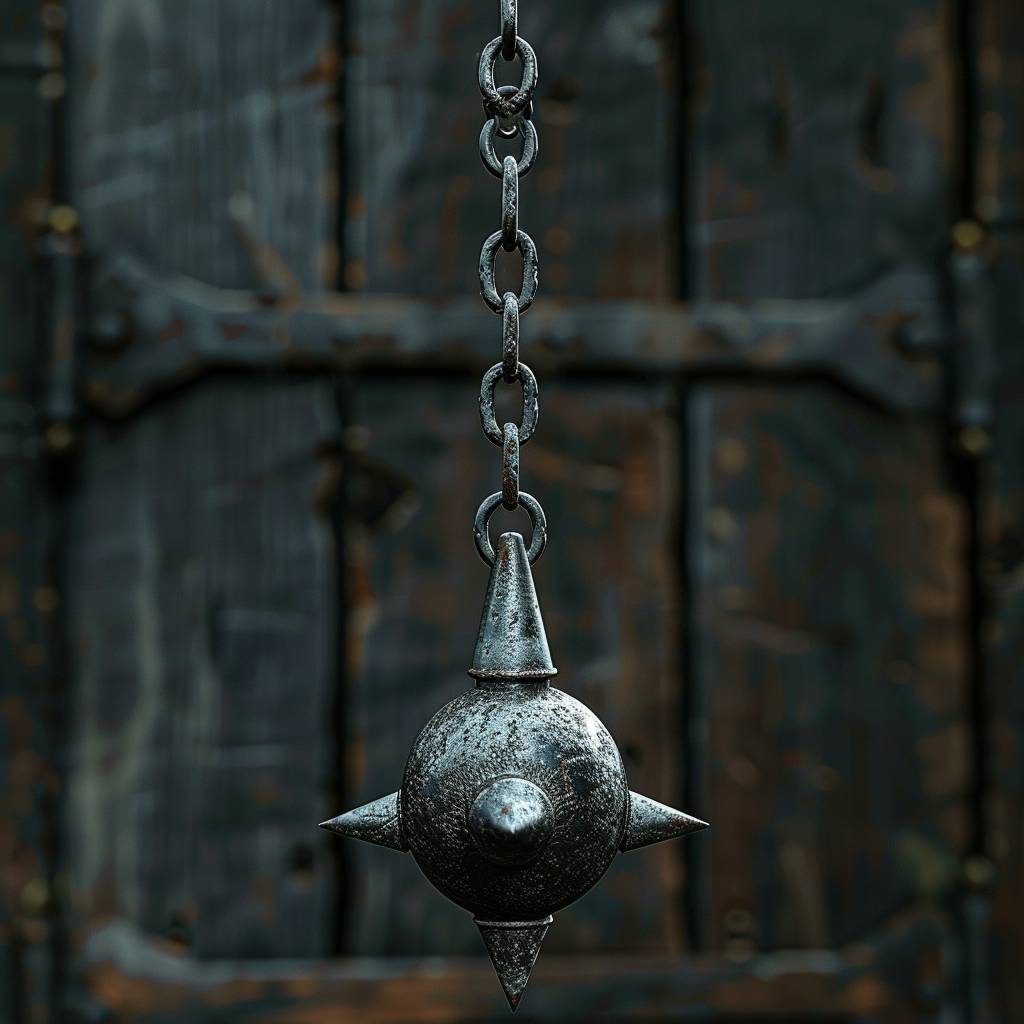
In battle formations, peasant soldiers equipped with these weapons served a vital role breaking through heavily armored adversaries. They mastered quick hand movements, using safety chains and ropes to control the swinging motion. These safety chains also helped avoid self-injury or losing their weapon mid-combat.
Coordination was crucial when using the flail. Flail wielders had to time their swings perfectly amidst the chaos of war while maintaining enough space from fellow soldiers to prevent accidents. As versatile tools on the battlefield, flails demanded respect for both their offensive capabilities and the skills required to wield them effectively.
Advantages and Disadvantages of the Flail
Although the flail is an excellent weapon, it also has its shortcomings. Here are some of the advantages and disadvantages of flails.
Advantages
– The flail stands out for its ability to strike with force and surprise; it packs a powerful punch that can dent armor and knock down foes.
– This weapon has an edge in combat due to its unique design, allowing it to hook or wrap around an enemy’s shield to land a blow.
Disadvantages
– Mastering the flail takes skill and practice as one misstep could cause self-injury.
– Its unpredictable nature often demands extra caution since missing a target might expose the user to counterattacks.
Flail Weapons in Modern Times
Although the flail has long retired from the battlefields, its legacy endures in martial arts forms and as a prized collector’s item that resonates with history enthusiasts. From disciplined demonstrations in Chinese martial arts to a treasured relic behind the glass of an exhibit, the flail continues to fascinate and inspire curiosity about medieval combat and craftsmanship.
Flail in Modern-day Martial Arts
Traditional Chinese martial arts and some schools of HEMA have brought flail-like weapons back into the spotlight. Enthusiasts practice with these ancient tools, striving to master the swing of a war-flail or the precision of nunchaku moves.
They seek out knowledge from old texts like “Bellifortis” by Konrad Kyeser and study art depicting men at arms wielding flails in combat.
Training with flails adds variety to martial arts techniques and helps practitioners develop unique skills such as coordination and timing. Re-enactment groups and martial artists demonstrate mounted combat using replicas of these historical weapons, showing how horsemen would have maneuvered their dreaded ball-and-chain implements in battle centuries ago.
These exercises not only preserve traditional fighting styles but also offer insights into medieval warfare’s complexity and skill level required by those who bore arms.
Collecting and Preserving Flail Weapons
Collectors and history enthusiasts often seek out flails for their unique place in medieval weaponry. Finding an authentic war flail can be a thrilling experience, as these weapons are rare and steeped in history.
To properly maintain a flail, you need to keep it in a controlled environment where humidity and temperature do not promote rust or decay of the wood. Use oils designed for metal preservation and gently clean the ball and chain to prevent corrosion.
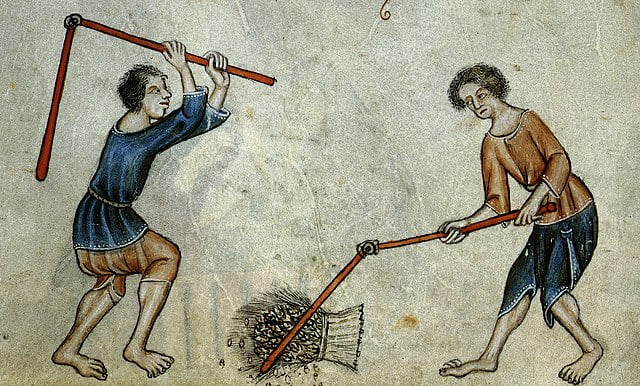
Museums worldwide display flails as a testament to their use in warfare during medieval times. These historic pieces hang next to two-handed swords and lances, showcasing the evolution of battle equipment through the ages.
They remind visitors of the craftsmanship of blacksmiths who forged them centuries ago. If you’re looking into adding one to your collection or simply want to appreciate their design up close, know that a well-preserved flail is not just an artifact; it’s a slice of martial history brought forward into modern times.
If you want to see some well-preserved medieval flails, check the table below to see if there’s one on display near you:
| Institution | Location | Flails on Display |
| The Wallace Collection | London, UK | One-Handed Military Flails |
| Royal Armouries Museum | Leeds, UK | Two-Handed Great Flails |
| Metropolitan Museum of Art | New York, USA | Various Medieval Battle Flails |
| Historisches Museum | Frankfurt, Germany | Agricultural-Originated Flails |
Conclusion: The Legacy of the Flail
As we journey through the history of medieval warfare, the flail stands out with its unique design and fighting techniques. This formidable weapon leaves a mark on our understanding of combat from an era long past.
Its evolution from farm tool to battle instrument demonstrates ingenuity in wartime. Now, enthusiasts continue to study and appreciate the flail’s place in martial history. Indeed, its legacy endures as a symbol of medieval might and strategy.
FAQs
1. What is a flail in medieval weapons?
A flail was a type of weapon in the Middle Ages, often used by horsemen and foot soldiers like pikemen and gendarmes for fighting their enemies.
2. How was the flail different from other medieval weapons?
Unlike swords such as longswords or rapiers, the flail had a unique design with one or more weights attached to chains, which could strike over shields or around armor.
3. Did all medieval soldiers use flails?
No, not every soldier used flails. For example, those trained as arquebusiers would carry firearms called arquebuses, while others might wield pikes or crossbows depending on their role in battle.
4. What are some reasons people remember the flail today?
The distinctiveness of the weapon has kept it alive in popular culture with references in books like “A Song of Ice and Fire,” social media discussions about historical weaponry, and even re-enactments at places like smithies during jousting events.
5. Was the flail used outside of combat situations?
Evidence suggests that while mainly a combat tool perfect for siege warfare, some versions of the weapon may have also been utilized by peasants for tasks related to agriculture such as threshing grain.
